Tags
Bee, blossom, cow parsley, Crabapples, dandelion, field maple, flowers, gardens, ground-ivy, Hawthorn, horse chestnut, Hoverfly, insects, jonquils, Lady's Smock, Maytime, miniature Tulip, narcissus, pasque flower, Pear, pieris, saxifrage, shrubs, St Mark's fly, Suffolk, trees, wild cherry
This post includes the better photos I took at home during the first half of May.
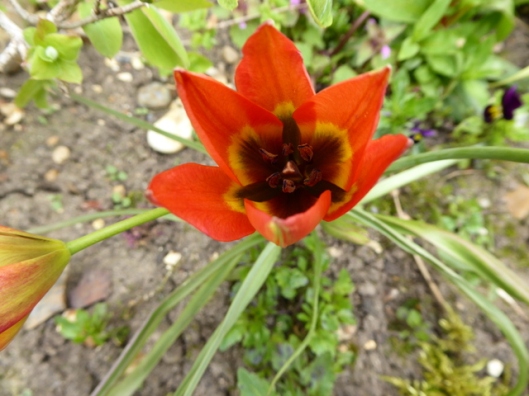
I have a few miniature scented Tulips. I have no idea what they are called or even when I got them though I think they are about 18 years old. I had a selection of red, orange and yellow ones but all that’s left are the red ones.
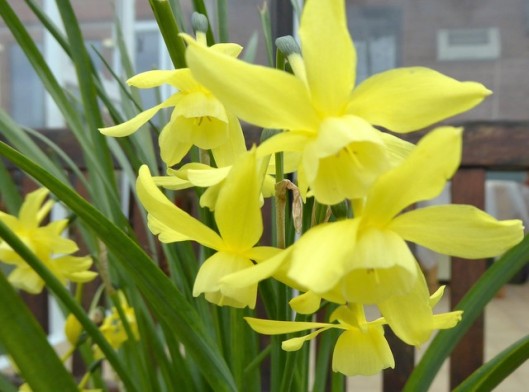
These jonquils are tiny and the flowers bob about on their narrow stems like yellow butterflies. Each flower is only about 2 inches across.
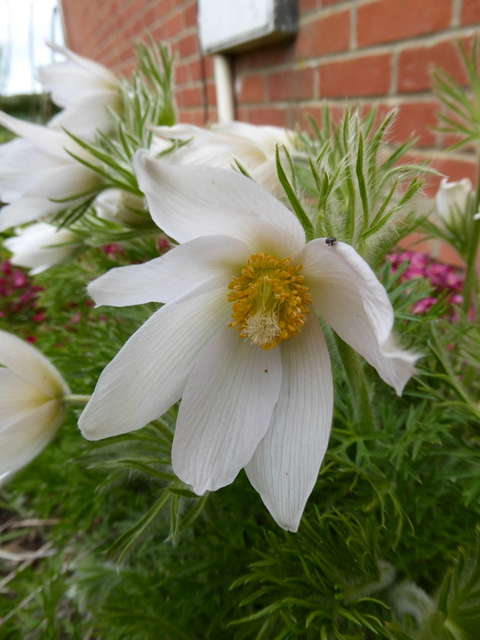
The Pasque flowers (Pulsatilla vulgaris ‘Alba’ )in my garden came out well after Easter this year. Not only was Easter early but the weather was cold and the flowers sensibly stayed as buds until the time was right.

Pear ‘Concorde’ blossom. This pear is supposed to be a dessert pear but by the time it is soft enough to eat it is already rotting in the centre. Perhaps our climate isn’t suitable for it? We harvest the pears before they have started to soften and we cook them or we prepare them for the freezer.

Pear blossom with a visiting Hoverfly. The lichen is doing quite well too with its orange fruiting bodies.

These are St. Mark’s-flies (Bibio marci) doing what flies do in the spring. The female is the upper fly and she has smoky-grey wings and a small head. The lower fly is the male and he has silvery wings and a larger head. Both sexes have spines on their front legs at the tip of the tibia. You can just see this on the female’s front leg. These flies fly weakly and slowly and dangle their legs as though the effort of flying is almost too much for them. They are called St. Mark’s-flies because they usually appear on or around St. Mark’s day which is April 25th. This photo was taken on 2nd May – it was a cold spring!

Crabapple species blossom. Standing under this weeping tree I am almost over-powered by the scent of roses and the buzzing of bees.
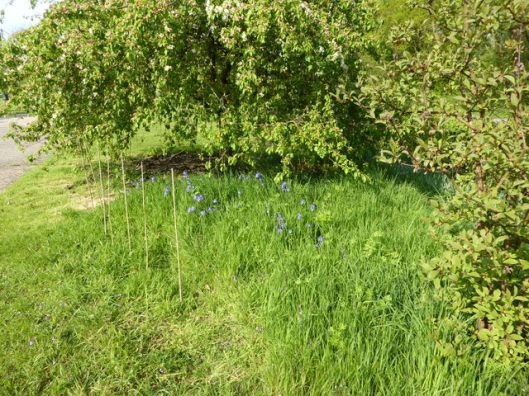
These are the English Bluebells (Hyacinthoides non-scripta) I am trying to establish next to the weeping crabapple. I have put canes alongside them to remind us not to mow them until the seeds have set and the leaves have died. I am also hoping that the canes will stop the deer from trampling the plants.
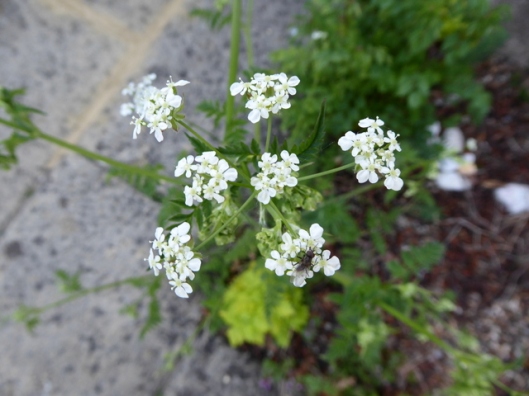
Cow Parsley (Anthriscus sylvestris) (or as it is called here in Suffolk, Sheep’s Parsley) with a fly. I am very fond of Cow Parsley and the sight of masses of it in flower along the lanes makes me happy.
Here is another song that features a wonderful trombone solo and a fantastic brass riff too! This is a very old recording and it is also an uncommon arrangement for this song.
Thanks for visiting!

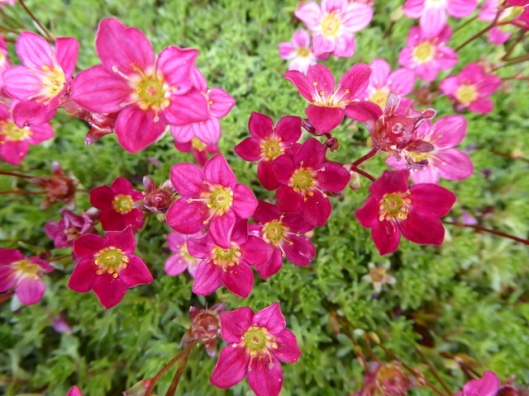
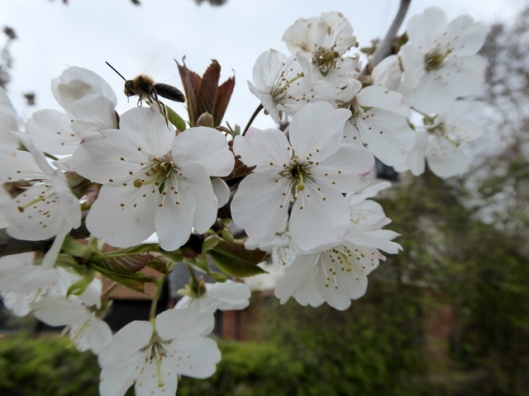
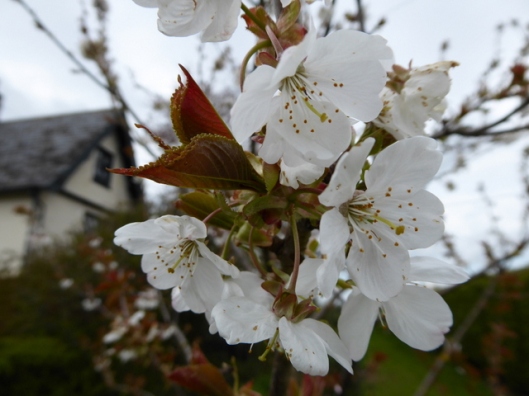

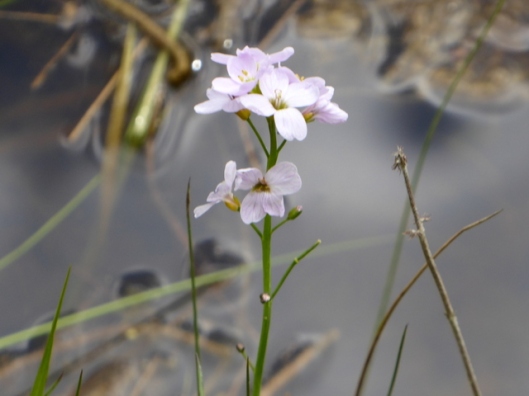





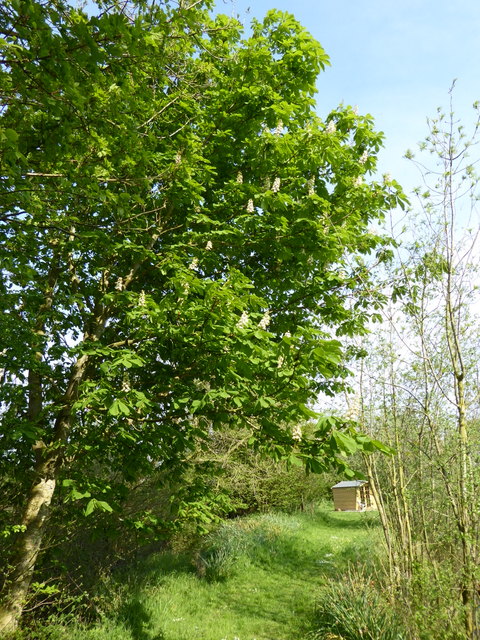
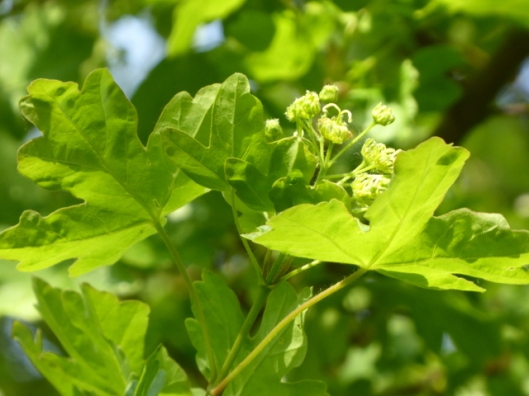

Such beautiful early May flowers and their visiting bees and flies! Fruit tree blossoms are among my favorites.
I am listening to the old recording, “Time on my Hands”. I am not familiar with this piece. Nice selection, Clare!
LikeLiked by 1 person
Thank-you very much! I love fruit tree blossoms too – it is such a pity they don’t last long, though that probably adds to their attractiveness!
LikeLike
Loved the spring flowers and the blossom.
LikeLiked by 1 person
Thank-you Susan.
LikeLike
These are absolutely beautiful, Clare! Thank you for brightening my day! Enjoy the weekend! ❤
LikeLiked by 1 person
Thank-you very much, Jill! I hope you have a wonderful weekend too. ❤
LikeLiked by 1 person
Your place must be pure heaven (or Eden!) during spring! The variety you have is amazing!
LikeLiked by 1 person
Thank-you Kerry! The cool damp weather has helped a few of the flowers last a little longer than usual which is nice. The butterflies are struggling as they need a little warmth and some sunshine to fly.
LikeLike
you have such a nice variety of blooms 🙂 I only wish there was a scratch and sniff option for internet photos.
LikeLiked by 1 person
Great idea! 😀
LikeLike
Lovely May flowers, I already miss tulips and tree blossoms. All the changes happen so quickly! I’m a big fan of cow parsley too.
LikeLiked by 1 person
Thank-you! I’m glad you like cow parsley too!
LikeLiked by 1 person
Beautiful pictures! I like the delicate lemon-coloured jonquils the best. Thank you for sharing 🙂
LikeLiked by 1 person
Thank-you very much Kim!
LikeLike
Fantastic photos! I especially love that pretty variegated Pieris. And saxifrage is a favourite – such a gorgeous colour!
LikeLiked by 1 person
Thank-you Sheryl!
LikeLike
An excellent set of photographs. I liked the pulsatilla. I agree with you about cow parsley. Al Bowlly is always fun.
LikeLiked by 1 person
Thank-you! There are a number of people living here that would gladly get rid of all the cow parsley.
LikeLike
I always like hearing about plants I’ve never heard of, like the lady’s smock and field maple. I’m not sure if either one grows here.
Sometimes pear tree blossoms can have a foul smell but I like them just the same. Odd that the pears spoil that way. I wonder if you let them ripen indoors if they’d do the same.
You’ve got some beautiful flowers in your yard! My favorite is the saxifrage.
LikeLiked by 1 person
Thank-you Allen. We have tried ripening them indoors and they behave in the same way. Now we know we have to pick early and process them immediately it is fine. They taste wonderful when cooked and they freeze well too. We will have to find another dessert pear to grow!
LikeLiked by 1 person
So many beautiful flowers that I’m not going to attempt to pick a favorite, they’re all special in their own way. You garden must be amazing in the spring with the scent of these flowers! Nice musical selection as well.
LikeLiked by 1 person
Thank-you very much Jerry!
LikeLike
The saxifrage is such a beautiful color! As for the flowering trees – yes, they don’t last too long. Our cherry this year bloomed during a very overcast and kind of rainy week, so I really wasn’t able to appreciate it. Cute song!
LikeLiked by 1 person
Thank-you Lisa! It’s so sad when we and the tree wait all year for the blossom and then bad weather ruins it all in hours.
LikeLike
What a set of pretty flowers to start my Monday. Thanks for it, Clare. Even the dandelion looks pretty. Off to listen to the music now.
LikeLiked by 1 person
Thank-you Cynthia! Those dandelions are cunning flowers!
LikeLiked by 1 person
They are surely resilient and prolific! My goodness.
LikeLiked by 1 person
I love the music selection Clare. I love the crackle of music played on a gramophone – it has a lovely cosy feel to it as if I should light the fire and put the kettle on!! I loved seeing all your pretty spring blooms. You have some really special ones, particularly the pink Saxifrage and the double narciuss. I always enjoy your posts and the little glimpses of England. Thank you!
LikeLiked by 1 person
My pleasure Kate and thank-you for your lovely comments – you always say such nice things!
LikeLiked by 1 person
I love cow parsley – it is so beautiful. Monty Don was standing surrounded by it in his garden the other Friday and it looked wonderful. Like the crab apples too. Hope the deer keep away from the blue bells. That is something we never have to worry about!
LikeLiked by 1 person
Thank-you Rachel! Most of the Cow Parsley has gone now for another year – sigh! The deer have kept off the bluebells and the seeds are maturing nicely. The rain has battered the plants quite a bit though!
LikeLiked by 1 person
Our roses look quite sad. Glad the deer kept off the bluebells 🙂
LikeLiked by 1 person
Poor roses 😦
LikeLike
Beautiful – I can smell all those blooms from here!
LikeLiked by 1 person
Thank-you Liz!
LikeLike
Such lovely flowers, and those little scented tulips are so wonderful!!! Grant photos and thnak you for sharing! Xo Johanna
LikeLiked by 1 person
Thank-you very much Johanna Xo
LikeLike
Wow, beautiful photos, so many beautiful flowers. :). I love the photo with the hoverfly, though I’m not a fan of the two st Mark’s flies!
LikeLiked by 1 person
Thank-you very much C!
LikeLiked by 1 person
Beautiful photos. Sad to report I seem to have deleted the comment you made on my post about cake and canape – liked the post but pressed a random button typing on my knee. Sorry. ;-(
LikeLiked by 1 person
That’s okay – just made me laugh! Would you like me to comment again or shall it be a mere memory? 😀
LikeLiked by 1 person
Do it again please – share the joy of puns. 😉
LikeLiked by 1 person
Will do.
LikeLike
Pingback: GOOD LUCK